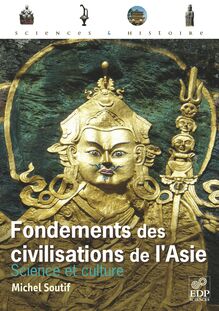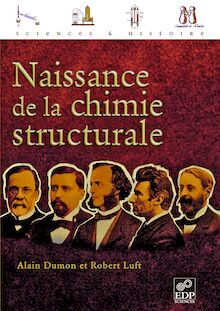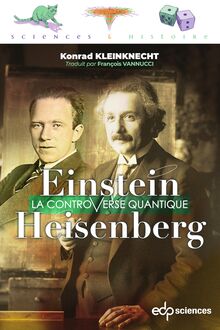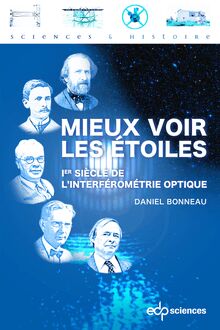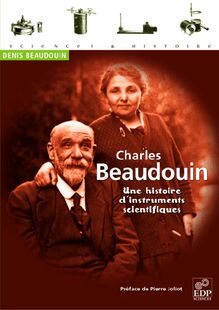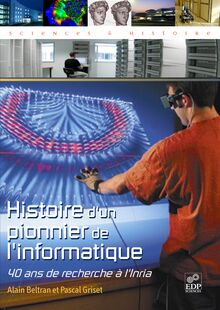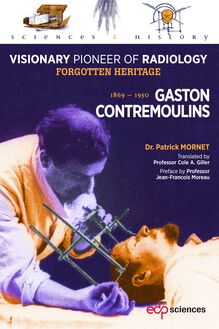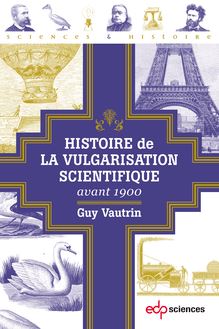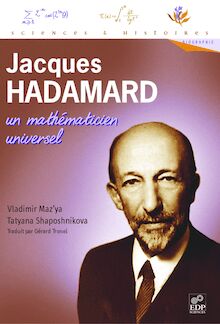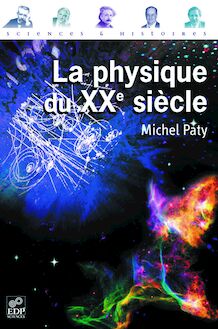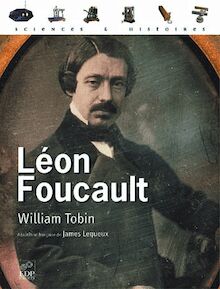When Albert became Einstein , livre ebook
152
pages
English
Ebooks
2024
Obtenez un accès à la bibliothèque pour le consulter en ligne En savoir plus
Découvre YouScribe en t'inscrivant gratuitement
Découvre YouScribe en t'inscrivant gratuitement
152
pages
English
Ebooks
2024
Obtenez un accès à la bibliothèque pour le consulter en ligne En savoir plus
Publié par
Date de parution
18 avril 2024
Nombre de lectures
2
EAN13
9782759834815
Langue
English
Poids de l'ouvrage
1 Mo
This book proposes an in-depth investigation carried out in Italy in young Albert Einstein's footsteps, since his attempt to enter the ETH Zurich in 1895 until his first doctoral work in 1901. We follow his family, who transferred his electrical engineering company from Munich to Milan, in the rich social, economic, political and industrial context of post-unified Italy; a milieu also familiar to Michele Besso, Albert's closest friend and collaborator, whom he met again daily in Milan on semester-breaks, after their first meeting in 1895. In Pavia, the parish register will lead us to Carlo Marangoni, the uncle of Ernestina (Albert's friend) and a specialist in capillarity phenomena. In Milan, we will discover the library of the Lombardo Institute, Academy of sciences and letters, where Albert worked for his bibliography.Old registers at the university and at the Polytechnic will draw our attention to his connection with Giuseppe Jung, one of Michele's uncles, an academician.
This young Albert environment sheds a new light on his scientific remarks to his fiancée Mileva Marić : his first article on capillarity and molecular forces; his interest in wireless telegraphy; his search to evidence the motion of the Earth through the ether; his thesis extended to weakly compressed gases and even his early questionings on the nature of light. All of this we will discover in a trip round Lombardy in the beginning of the 19th century.
Table of Contents
Introduction. . . . . . . . . . . . . . . . . . . . . . . . . . . . . . . . . . . . . . . 1
1905, a “miraculous” year for Albert Einstein? . . . . . . . . . . . . . . . . . . . 1
Two important witnesses: Mileva Marić and Michele Besso . . . . . . . . . . 3
Letters to Mileva . . . . . . . . . . . . . . . . . . . . . . . . . . . . . . . . . . . 3
Correspondence with Michele Besso . . . . . . . . . . . . . . . . . . . . . . 5
Michele’s unsuccessful plea for a history of the genesis of Albert’s ideas . 7
Editorial plan . . . . . . . . . . . . . . . . . . . . . . . . . . . . . . . . . . . . .. . . . . 10
1. The Italian political and industrial context of the 19th Century 15
The Einsteins in Milan and Pavia: settlements and relationships . . . . . . 16
The short adventure of Einstein, Garrone & Cie (1894-1896) . . . . 16
Famous homes and political connections . . . . . . . . . . . . . . . . . . . 17
Historical context: Napoleonic and Risorgimento influences . . . . . . . . . . 19
The Cisalpine Republic . . . . . . . . . . . . . . . . . . . . . . . . . . . . . .. 19
The insurrection of 1848 . . . . . . . . . . . . . . . . . . . . . . . . . . . . .. 21
The Risorgimento and the birth of a modern state . . . . . . . . . . . . 22
The creation and role of the Lombard Institute . . . . . . . . . . . . . . . 23
The newindustrial and economic framework . . . . . . . . . . . . . . . . . . . . 25
Unificationand railways . . . . . . . . . . . . . . . . . . . . . . . . . . . . . . 25
The electrical industry . . . . . . . . . . . . . . . . . . . . . . . . . . . . . .. . 26
Insurance and the fate of workers . . . . . . . . . . . . . . . . . . . . . . . . 27
The academic world and its links to the industrial sector . . . . . . . . . . . 28
Some examples of the creation of polytechnics (Turin, Milan, Rome) . . .. . . . . . . . . . . . . . . . . . . . . . . . . . . . . . . . . . . 29
The Italian Electrotechnical Association . . . . . . . . . . . . . . . . . . . 31
Hoepli and the development of Italy . . . . . . . . . . . . . . . . . . . . . . 32
2. The company of Jakob and Hermann Einstein in the international electrotechnical context – exhibitions and reviews. . . . . . .. 35
Paris 1881,the first International Electricity Exhibition . . . . . . . . . . . . 37
The birth of a major exhibition devoted to electricity and its applications . . . . . . . . . . . . . . . . . . . . . . . . . . . . . 37
Electric lighting . . . . . . . . . . . . . . . . . . . . . . . . . . . . . . . . . . .. 39
Electric dynamos . . . . . . . . . . . . . . . . . . . . . . . . . . . . . . . . . . .41
Rail transport . . . . . . . . . . . . . . . . . . . . . . . . . . . . . . . . . . .. . . 42
Medical and educational applications . . . . . . . . . . . . . . . . . . . . . . 43
The first international congress of electricians . . . . . . . . . . . . . . . 43
Munich 1882 and the Einsteins’ involvement . . . . . . . . . . . . . . . . . . . . 44
Vienna 1883 and electric meters . . . . . . . . . . . . . . . . . . . . . . . . . . . . .46
Turin 1884 and the development of alternating current . . . . . . . . . . . . . 47
Frankfurt 1891, three-phase current and the Einsteins’ participation . . . 50
Electrotechnical magazines . . . . . . . . . . . . . . . . . . . . . . . . . . . . . . . . 52
3. Michele Besso and his family’s role in Italian industrialisation . 55
Michele Besso (1873-1955), Albert’s long-standing friend . . . . . . . . . . . 56
A brilliant young man . . . . . . . . . . . . . . . . . . . . . . . . . . . . . . . . 56
Constant links with Albert . . . . . . . . . . . . . . . . . . . . . . . . . . . . . 57
An endearing personality . . . . . . . . . . . . . . . . . . . . . . . . . . . . .. 58
Albert and Michele meet . . . . . . . . . . . . . . . . . . . . . . . . . . . . . . 60
The paternal branch of the Besso family . . . . . . . . . . . . . . . . . . . . . .. 63
Giuseppe Besso (1839-1901), Michele’s father, humanist . . . . . . . . 63
Beniamino Besso (1840-1907), railway engineer and scientific author . .. . . . . . . . . . . . . . . . . . . . . . . . . . . . . . . . . . . . 64
Marco Besso (1843-1920), the influential Chairman of General Insurance .. . . . . . . . . . . . . . . . . . . . . . . . . . . . . . . . . . . 66
Davide Besso (1845-1906), mathematician and teacher . . . . . . . . . 68
The maternal branch of the Cantoni family . . . . . . . . . . . . . . . . . . . . .70
Vittorio Cantoni (1857-1930), civil Polytechnic engineer . . . . . . . 71
Giuseppe Jung (1845-1926), professor of graphic statics at the Milan Polytechnic . . . . . . . . . . . . . . . . . . . . . . . . . 73
4. Albert’s environment in Pavia and preparations for ETH . . . . 75
Albert’s attempt to be admitted to ETH in October 1895, at the age of sixteen without a school-leaving certificate . . 76
The plan tobe admitted to ETH . . . . . . . . . . . . . . . . . . . . . . . . . 76
The letter to Galileo Ferraris . . . . . . . . . . . . . . . . . . . . . . . . . . . 77
Intervention with Herzog . . . . . . . . . . . . . . . . . . . . . . . . . . . . . . 78
The scientific memoir of 1895 . . . . . . . . . . . . . . . . . . . . . . . . . . .. . . . 79
The circumstances . . . . . . . . . . . . . . . . . . . . . . . . . . . . . . . . .. 79
The subject: the state of the ether in a magnetic field . . . . . . . . . . 80
What are the sources for the dissertation? . . . . . . . . . . . . . . . . . . 81
The Einsteins’ links with the University of Pavia . . . . . . . . . . . . . . . . .83
Their partner Lorenzo Garrone and the mathematician Giulio Vivanti . . . . . . . . . . . . . . . . . . . . . . . . . . . . . . . . 83
Their partner Angelo Cerri, the oretical geodesy assistant . . . . . . . 84
Jakob Einstein, Otto Neustätter and the medical academics in Munich and Pavia . . . . . . . . . . . . . . . . . . . . . . . . . . . . 86
Links with physicists at the University? . . . . . . . . . . . . . . . . . . . . 87
Social relations in Pavia: Ernestina Marangoni and her uncle Carlo, a physicist. . . . . . . . . . . . . . . . . . . . . . . . . . . . . . . . . . . . . . . .89
Ernestina Marangoni. . . . . . . . . . . . . . . . . . . . . . . . . . . . . . . . . 89
Carlo Marangoni, a renowned physicist and teacher . . . . . . . . . . . 90
Carlo Marangoni: a direct influence on the young Albert? . . . . . . . 92
5. Albert’s scientific environment in Milan . . . . . . . . . . . . . . . . 95
The library of the Lombard Institute (1899-1901). . . . . . . . . . . . . . . . . 96
Michele’s work on wireless telegraphy . . . . . . . . . . . . . . . . . . . . . . . . .99
The discovery of electromagnetic waves . . . . . . . . . . . . . . . . . . . . 99
Giuseppe Jung’s library . . . . . . . . . . . . . . . . . . . . . . . . . . . . . . .101
A thesis by Michele in 1900-1901? . . . . . . . . . . . . . . . . . . . . . . . 102
An example of following up on scientific questions: thermo electricity . . . 103
Albert’s professional worries . . . . . . . . . . . . . . . . . . . . . . . . . . . . .. . 106
Links with his father’s new company business . . . . . . . . . . . . . . . 106
Looking fora position as a university assistant . . . . . . . . . . . . . . 107
Scientific protection . . . . . . . . . . . . . . . . . . . . . . . . . . . . . . . . . .. . . 109
Albert’s lasting link with Giuseppe Jung through his personal library . .. . . . . . . . . . . . . . . . . . . . . . . . . . . . . . . . . . . . 109
The professor of chemistry at the Polytechnic Institute . . . . . . . . . 110
The Ansbacher family and the musical environment in Milan . . . . 111
6. Three Albert’s scientific questionings (1898-1901) in connection with his later 1905 work . . . . . . . . . . . . . . . . . . . . . . . . . . . . 113
There current problem of the relative motion of matter and ether (1898-1901) . . . . . . . . . . . . . . . . . . . . . . . .. . . . . . . . . . . . . . . 113
Reading Ernst Mach . . . . . . . . . . . . . . . . . . . . .. . . . . . . . . . . . 113
An attemptto demonstrate the relative motion of matter with respect to the ether . . . . . . . . . . . . . . . . . . . . . . . . . . 115
Kyoto 1922 memories . . . . . . . . . . . . . . . . . . . . . . . . . . . . . . . . 116
The abandoned thes is on molecular forces (October 1900-December 1901) 118
Capillary phenomena and molecular forces in liquids . . . . . . . . . . 118
Extending the subject of the thesis to molecular forces in gases . . . 121
Max Reinganum’s article in the Lorentz Jubilee volume . . . . . . . . 122
Abandoning the thesis in February 1902 . . . . . . . . . . . . . . . . . . . 124
Questions about the nature of light and light quanta from 1901? . . . . . . 125
A final word . . . . . . . . . . . . . . . . . . . . . . . .. . . . . . . . . . . . . . . 131
Index of names . . . . . . . . . . . . . . . . . . . . . . .. . . . . . . . . . . . . . 133
Selected bibliography . . . . . . . . . . . . . . . . . . .. . . . . . . . . . . . . 135
Acknowledgements . . . . . . . . . . . . . . . . . . . . . .. . . . . . . . . . . . 141
Publié par
Date de parution
18 avril 2024
Nombre de lectures
2
EAN13
9782759834815
Langue
English
Poids de l'ouvrage
1 Mo
